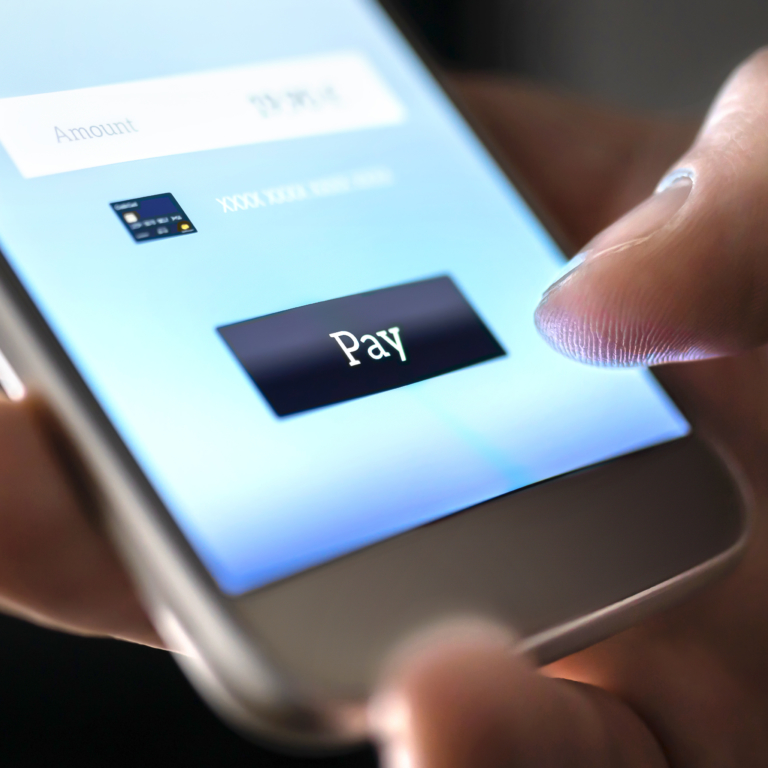5G Transformation Hub
How 5G is transforming sports for spectators
Verizon is using 5G millimetre wave (mmWave) to deliver compelling services inside NFL stadiums
To enrich spectators’ experience of live sports, Verizon has deployed 5G millimetre wave networks in 25 National Football League (NFL) stadiums in the U.S. The connectivity can enable fans to watch the action from multiple angles on their handsets and enjoy augmented reality (AR) games and services, while making it easier to buy food, beverages and merchandise. Verizon is also using its low latency 5G Ultra Wideband network, paired with mobile edge computing, to enable fans to enjoy real-time statistics.
Select a project
Contents
Challenge
When tens of thousands of spectators are gathered in a single stadium, it can be difficult to for them to stream video or use augmented reality when on 4G or Wi-Fi.
Solution
Verizon is deploying its 5G Ultra Wideband network in NFL stadiums to provide spectators with a compelling live experience. With much greater capacity than 4G or Wi-Fi, the 5G Ultra Wideband network can enable fans inside a stadium to access high definition multimedia services. Supplemented by edge computing, the 5G network can also be used to enable crowd density analytics, and other services that can help reduce queuing or over-crowding in specific areas of the stadium.
Impact & Statistics
The 5G connectivity is transforming spectators’ NFL experience and giving them more bang for their buck because they can now enjoy new 5G experiences in the stadium. It is also making it easier for spectators to buy merchandise, food and drink, while potentially enabling NFL stadia to host additional events that can benefit from advanced connectivity, such as e-sports tournaments with real-time stats to help fans learn and stay on top of the games.
Wider Implications
5G millimetre wave (mmWave) could be used to bring high definition multimedia services to all kinds of venues and locations where large numbers of people gather. The technology can provide sufficient capacity to limit the effects of network congestion for those connected to the 5G network.
Stakeholders
Verizon, the NFL, Aifi
02
How 5G is transforming sports for spectators
Verizon is using 5G millimetre wave to deliver compelling services inside NFL stadiums
The live sports experience is enjoying a major upgrade. Spectators inside stadiums in the U.S. can now watch the live action or replays from multiple angles on a 5G handset. They can also point their handset’s camera at the field and their performance stats will appear on the screen.
These are just two of an array of services that Verizon’s 5G millimetre wave (mmWave) networks are enabling in dozens of National Football League (NFL) stadiums across the U.S.. To enhance the fan experience, Verizon has invested hundreds of millions of dollars in installing mmWave (branded 5G Ultra Wideband) connectivity and edge compute capacity in 25 NF L stadiums. In total, Verizon offers 5G inside more than 60 U.S. sports and entertainment venues
As a result, Verizon customers inside a stadium can view live action or instant replays from different camera angles through the operator’s Multi-View service. “Multi-view gives you seven streams of high definition video, so you can control the experience,” explains Brian Mecum, Vice President of Device Technology for Verizon. “In the past, a fan was beholden to the producer of the jumbotron, but now they can curate their own experience and watch replays from seven different angles in their own black rectangle. They can even look at a score before the referee has had time to review it. That’s just unprecedented.”
Verizon and its partners are also using 5G to enable AR services, such as player statistics, live win probabilities and animated celebrations. One service enables fans to merge their own images with live footage from the stadium. “With augmented reality, you can take a selfie put it on the jumbotron and upload that picture to social media. How cool is that?” says Brian Mecum.
Fans at Super Bowl LVI were able to see the action happening live from up to seven different camera angles all at once and rewind to see replays using Verizon Multi- View in the NFL Ticketholder App. Fans could also project AR overlays of NFL’s “Next Gen Stats” for players in near real-time. Verizon 5G Multi-View is available on select Android and iOS 5G devices.
Verizon debuted NFL Ultra Toss at Super Bowl LV, the first 5G and mobile edge computing enabled mobile game for fans in-stadium. Fans with the NF L Ticketholder app received a push notification during the second quarter and were able to compete by using their smartphone to virtually toss a football into the back of a virtual pickup truck positioned in the middle of the field. Fans connected to 5G Ultra Wideband in the stands could point their phone’s camera to the middle of the field to see the virtual pickup truck materialize on the field using AR. The interactive AR experience also allowed fans to simultaneously see the live virtual football tosses happening in realtime from other fans, amping up the head-to-head competition.
At Super Bowl LVI, NF L Ultra Toss was also available in the NFL Ticketholder app for fans watching in SoFi Stadium during the big game. New features for the 2021-22 season include a leaderboard, a moving target, AR overlays to see how certain sections are doing, multiple tosses for each player and NextGen Stats tied to live toss data.
Another Verizon service, called 5G Portal, enables fans to access live high-definition 360-degree video coverage from novel locations, such as the starting grid or pits in a motor sports race. “Humans don’t normally go there because it’s not safe, but we can put our 360-degree Portal camera there,” explains Brian Mecum. “You can look at what it’s like when the cars are going by. It gives you the experience of being able to go somewhere you couldn’t go before.”

03
Reducing the friction from the live experience
Verizon is working with various technology companies, such as AiFi, to harness the full potential of 5G connectivity and edge computing capacity inside stadiums. AiFi, which enables contactless autonomous shopping, is using Verizon 5G Ultra Wideband and mobile edge compute at stadiums to process computer vision tracking data in near real time, allowing shoppers to avoid long checkout lines, buy what they need and leave, all without staff interactions. Its autonomous stores are now more portable, cost efficient and scalable: 5G and mobile edge compute allow AiFi to move intensive computing to the cloud, so less heavy equipment and hardware are needed on site.
“Through 5G and edge computing, people can buy more merchandise in a contactless way; it’s super easy, it’s fast,” says brian Mecum. “You go in, you have that emotion- al connection when you see something, you take it and you walk out and are charged automatically for the purchase.”
The flexibility of 5G connectivity can also make it easier for stadiums to relocate merchandise stores and other concessions, or establish new ones, if they need to. They could, for example, use 5G to establish temporary stores in the parking lot.
Verizon is also testing how LiDAR technology can help venue owners gain real-time information on crowd patterns, so they can make immediate decisions to help improve the flow of people. The LiDAR data is handled by 5G and edge compute capacity, where it can be analysed to determine traffic-flow and congestion patterns in near real-time.
That information can be used to deploy staff or digital signage and mobile applications to help spectators navigate venues for a better overall experience. The insights derived from the collected data can then be displayed on publicly viewable monitors or shared directly with spectators in real time using wayfinding and mobile app application programming interfaces (Apis), enabling patrons to make smarter decisions as they navigate through venues.
Together computer vision, crowd analytics and other 5G-enabled applications could significantly reduce queues for amenities within the stadium. “As fans return to live events, there is a need to reimagine the in-arena experience,” says Brian Mecum. “The deployment of 5G in these arenas is the foundation for unlocking future fan experiences and solutions for venue operations.”

04
Boosting ticket and merchandise sales
By using 5G to enrich the spectator experience, Verizon is confident NF L teams will draw more fans into their stadiums, while also selling more merchandise, food and drinks. “The fans are purchasing more and the stadium is creating more value with their investment,” says Eric Nagy, Global Director, Sports Partnerships and Innovation, Verizon Wireless. “It can be hard to get off the couch and leave home to go to a stadium especially in a cold weather environment. But what I love about things like Multi-View is that, as you get up and you walk around that stadium, you always hear the roar of the crowd.”
By enabling spectators to access the stadium quickly and then avoid queues, 5G can help “remove choke points and make the experience super fun,” adds Brian Mecum. “Fans would not have to think about having to wait in the bathroom line or having to wait in the concession line.”
At major sporting events, tens of thousands of people are likely to want to access online services simultaneously. NFL teams averaged 67,254 fans at home games in 2021, up 1% over the pre-pandemic season of 2019, according to a study by the Sports Business Journal. That makes it the best-attended sports league in the world.
Inside NFL stadiums, Verizon’s 5G network achieved average download speeds of 320.7 Mbps, according to an analysis by OpenSignal, during the 90 day period following August 6th 2021 (the day of the first preseason NFL game).
Some of the services Verizon is delivering inside NFL stadiums depend upon its customers having a compatible 5G handset. “Some products like Multi-View, are going to be specific to our mmWave spectrum,” says Brian Mecum.
When Verizon tried offering Multi-View on Wi-Fi, it had to scale the service back. “It wasn’t strong enough, so we had to dumb it down from seven to five video streams, and we had to dumb it down from 720p to 480p and 240p,” says Brian Mecum. “Wi-Fi can’t handle it.”
Moreover, the responsiveness of 5G is enabling completely new services that were impractical with earlier technologies. “You have the NHL (National Hockey League) where last year we showed that you can hold up a phone and track the player in real time, which you couldn’t do before,” says Brian Mecum. “Without 5G, you couldn’t get it in real time, there was a lag.”1

Sources
- 1. in ice hockey the puck can move very fast making it difficult for spectators to keep track of the action
05
Building 5G connectivity into the core of stadiums
Since Verizon began deploying 5G Ultra Wideband in 13 stadiums in 2019, the operator has made major investments in both infrastructure and services. Over the past two years, Verizon has expanded 5G Ultra Wideband connectivity within those venues and surrounding areas, and partnered with the NFL to develop in-stadium fan experiences.
For example, Verizon invested over US$80 million for permanent network enhancements to support the Super Bowl at Raymond James Stadium and around Tampa. Those enhancements include 70 miles of high-speed fibre, an upgraded distributed antenna system and 281 small cell antennas to provide coverage at events in and around the stadium as well as Downtown Tampa, Ybor City and the Tampa Riverwalk.
For Super Bowl LVI, Verizon invested $119 million dollars in Los Angeles’ SoFi Stadium, which opened in September 2020, and the surrounding Hollywood Park campus. Verizon’s largest 5G stadium build to date, SoFi Stadium was built with 5G Ultra Wideband at the core by partnering early in the design process and working on the build from the ground up.
As they become equipped with 5G, stadia could host a wider range of events. High-speed reliable connectivity could, for example, be used to temporarily transform NF L stadiums into digital arenas that can host mobile-gaming events with real-time, on-site multiplayer action.
Over the next decade, Verizon and the NF L plan to employ 5G to help sports teams to improve scouting, training, health and safety and game day operations. The technology could be used, for example, to support real-time analytics and visualizations for coaches and players, giving them the ability to learn from the last play and prepare for the next one.
Some of these technologies are already being used in other sports. For example, the Verizon 5G Performance Center, the practice facility for the Phoenix Suns basketball team, is testing a solution developed by ShotTracker, which uses 5G-connected sensors to collect and share game stats. ShotTracker, a Verizon Ventures portfolio company, says teams and broadcasters can use its solution to track player shot selection, ball movement and player efficiency to provide near realtime, in-game analysis.
This kind of technology can be used to help detect when a player has a minor injury or needs to work on a specific technique. “We are doing machine learning, computer vision and sensor insertion with the players to do stuff that no one’s ever done before,” says Brian Mecum. “The Phoenix Suns are currently number one in the NB A, and they went to the NB A finals last year. They are having statistical improvements, that they’ve never had before: their performance is off the rails.”
In time, in-stadium 5G could enable fans to see make/miss projections for a basketball player as they begin to take a shot, based on total career shooting percentage from that spot on the floor, in similar game situations. Edge compute and low latency 5G could be used to provide such a service (which would require processing massive amounts of historical data, along with real-time, in-game data) to thousands of fans in the arena.
“As people learn what we can improve or change or enhance, they will want to adopt this,” says Brian Mecum. “In terms of enhancing the in-stadium experience, we’re just getting started.”


Brian Mecum
Vice President of Device Technology for Verizon
06
About
About the GSMA
The GSMA is a global organisation unifying the mobile ecosystem to discover, develop and deliver innovation foundational to positive business environments and societal change. Our vision is to unlock the full power of connectivity so that people,
industry, and society thrive. Representing mobile operators and organisations across the mobile ecosystem and adjacent industries, the GSMA delivers for its members across three broad pillars: Connectivity for Good, Industry Services and Solutions, and Outreach. This activity includes advancing policy, tackling today’s biggest societal challenges, underpinning the technology and interoperability that make mobile work, and providing the world’s largest platform to convene the mobile ecosystem at the MWC and M360 series of events.
For more information, please visit the GSMA corporate website at www.gsma.com.
Follow the GSMA on Twitter: @GSMA.
GSMA 5G Transformation Hub
The GSMA 5G Transformation Hub is a source of information on some of the most innovative 5G solutions in the world. This portal contains case studies detailing design, benefits, key players, measured value and the future impact of scaling up these 5G solutions worldwide. The 5G Era is now firmly established and this family of standardised GSM technologies, including mmWave, are being rolled out successfully across the globe. The GSMA 5G Transformation Hub, launched at MWC Barcelona in 2022, provides details of how 5G is best placed to deliver real value for a range of key sectors including manufacturing, energy, transportation, media and live entertainment, smart cities and construction.. Many more case studies will be added, in the coming months, covering even more industries and the GSMA is asking Members to nominate innovative 5G case studies to add to this global digital showcase. The 5G Transformation Hub and this particular Case Study are both sponsored by Qualcomm.
About this case study
This case study is for information only and is provided as is. The GSM Association makes no representations and gives no warranties or undertakings (express or implied) with respect to the study and does not accept any responsibility for , and hereby disclaims any liability for the accuracy or completeness or timeliness of the information contained in this document. Any use of the study is at the users own risk and the user assumes liability for any third party claims associated with such use.